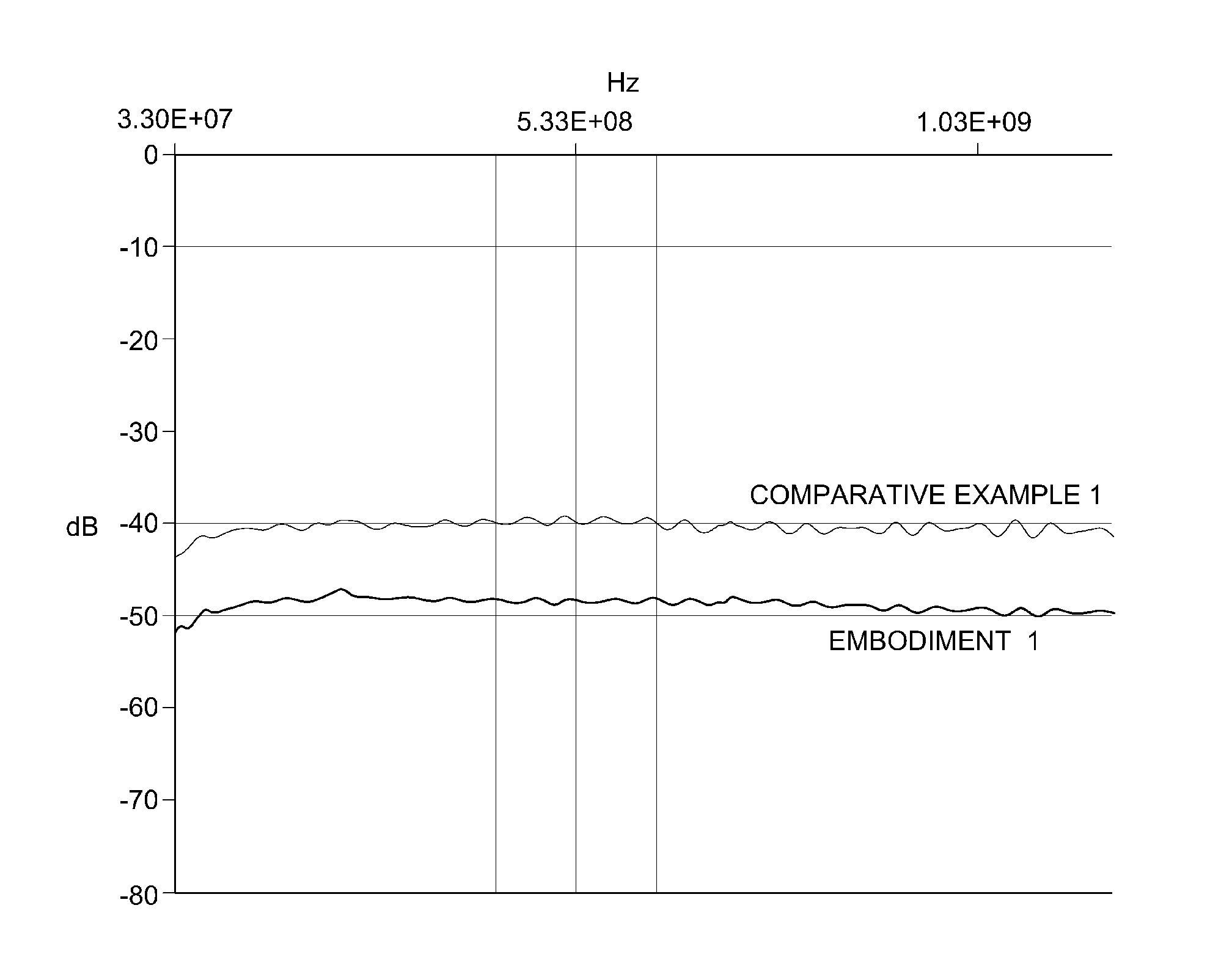Nanocomposite material containing glass fiber coated with carbon nanotubes and graphite and a method of preparing the same
- Summary
- Abstract
- Description
- Claims
- Application Information
AI Technical Summary
Benefits of technology
Problems solved by technology
Method used
Image
Examples
example
Preparation of a Hybrid Composite of Carbon Nanotube and Graphite
[0040]A glass fiber was coated with a carbon nanotube to prepare a conductive particle in a fiber shape of a micro unit through a following method. The glass fiber was impregnated in a carbon nanotube dispersion solution for about 0.5 to about 5 minutes, depending on the desired thickness, taken out of the carbon nanotube dispersion solution, and dried in an oven for use. The drying temperature was equal to or higher than the boiling point of the solvent used, and the glass fiber was sufficiently dried for at least about 60 minutes.
[0041]The glass fiber coated with 5 wt % of the MWNT (with a diameter of 80 nm and a length of 100 μm) and the graphite (with an average thickness of 40 nm and a size of 20 μm) were prepared in a volume ratio of 7:3 such that the resulting compounded mixture contained 8 wt % of the filler based on the total weight of the compounded mixture, and regularly mixed with polypropylene as the therm...
experimental example 1
Result of an Electromagnetic Wave Shielding Property of the Composites Prepared in the Embodiment and the Comparative Example
[0043]The electromagnetic wave shielding ability of the composite prepared in according to the exemplary embodiment and the comparative example was measured using an electromagnetic wave shielding measuring instrument (E 8362B Aglient). As illustrated in FIG. 1, the electromagnetic wave shielding property of the composite prepared in the embodiment was high compared to the comparative example. It can be appreciated that when the same quantity of fillers are added, the composite prepared by hybridizing the graphite nano particles having excellent heat transfer properties with the carbon nanotube achieved a better electromagnetic wave shielding property than the exclusive carbon nanotube having the excellent electromagnetic wave shielding property. In the case of the comparative example, although the added carbon nanotube was more than double that in the case in...
experimental example 2
Result of a Thermal Property of the Composites Prepared in the Embodiment and the Comparative Example
[0044]Heat transfer measurement values of the composites prepared in the embodiment and the comparative example were measured using a heat conduction measuring instrument (TCI-2-A, C-Therm Technologies Ltd.) in order to identify the heat transfer / dissipation properties of the tested materials. The measured results are represented in Table 1.
TABLE 1Example:Comparative Example:Test item20 wt % CNT / GNP / PP20 wt % CNT / PPHeat property (W / mK)2.01.1Through plane
[0045]As shown in Table 1, the heat conductivity was higher in the exemplary embodiment. Accordingly, it can be seen that it is possible to prepare a composite having excellent mechanical properties and electromagnetic wave shielding properties by a method of preparing the functional nanocomposite through coating the carbon nanotube on the glass fiber and mixing the carbon nanotube coated glass fiber with graphite, and the prepared fu...
PUM
| Property | Measurement | Unit |
|---|---|---|
| Temperature | aaaaa | aaaaa |
| Temperature | aaaaa | aaaaa |
| Thickness | aaaaa | aaaaa |
Abstract
Description
Claims
Application Information
 Login to View More
Login to View More - Generate Ideas
- Intellectual Property
- Life Sciences
- Materials
- Tech Scout
- Unparalleled Data Quality
- Higher Quality Content
- 60% Fewer Hallucinations
Browse by: Latest US Patents, China's latest patents, Technical Efficacy Thesaurus, Application Domain, Technology Topic, Popular Technical Reports.
© 2025 PatSnap. All rights reserved.Legal|Privacy policy|Modern Slavery Act Transparency Statement|Sitemap|About US| Contact US: help@patsnap.com

